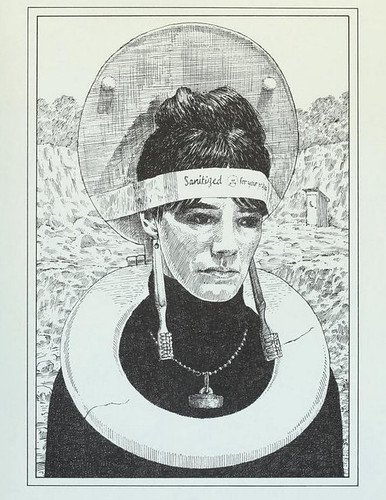Weekend reading: An unconventional design library
Often when we think about books that enrich our craft and make us better designers or technologists, we think about (excellent) books like Change by Design by Tim Brown or The Design of Everyday Things by Don Norman. Sometimes we can find lessons on design where you’d least expect them, hidden in children’s books, graphic novels and memoirs, among others.
These five books have something to tell us about how we apply design, even if the message might be a bit under the hood.
Motel Of The Mysteries
by David Macaulay
What it’s about:
In this children’s book, future archeologists struggle to put together the pieces of our civilization based on artifact findings, coming to wildly inaccurate conclusions.
Why read it?
Macaulay’s tongue-in-cheek “what if” reminds us that when we don’t do enough research, we run the risk of telling incomplete stories based on initial hypotheses.
In the Shadow of No Towers
by Art Spiegelman
What it’s about:
An emotional exploration of Art Spiegelman’s own experiences following the 9-11 terror attacks in New York and their effect on his life and work.
Why read it?
Art Spiegelman reminds us through this self-exploration that as creators, we can - and should - allow ourselves to be affected by tragedies of the world around us and have those influence what we produce. In addition, he uses the power of medium to tell his story; this graphic novel is printed in oversize format on thick art board to emphasize the scale and gravity of the tragedy. In this way, he reminds us to consider the context and delivery of our storytelling beyond the content itself.
Manifesto (print companion)
by Julian Rosefeldt
What it’s about:
A compilation of art manifestos throughout the decades displayed interconnectedly, creating new narratives.
Why read it?
Many of us consider design a technical endeavor, but the cultural impact and moral considerations of our work overlap with those of art to a large degree. Manifesto is actually a film and exhibition, but the print companion lets you browse through the interconnected manifestos at your own pace and as such, provides the space for reflection and consideration.
Ready Player One
by Ernest Cline
What it’s about:
In Ready Player One, all aspects of life take place within a virtual world called the OASIS. The protagonist, a high school student, searches for keys to an easter egg, which unlocks total control of the platform.
Why read it?
Cline’s sci-fi novel thrusts us into a virtual world where business and education mix with recreation and gamification. In turn, this reshapes real-world interactions and raises questions about the cultural impact of design choices in technology, many of which are being raised today in the context of The Metaverse.
Memories of the Future
by Wil Wheaton
What it’s about:
Wil Wheaton recounts his experiences in emotional detail as a child actor on the set of “Star Trek: The Next Generation”.
Why read it?
Wil’s retrospective on his career in the context of his struggles as an adult empowers us to do the same with clarity and honesty. We could all benefit from a sober re-calibration, not just designers.






